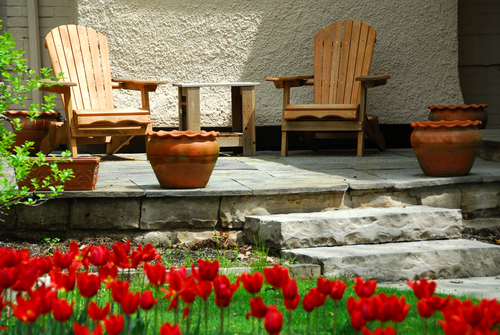The Effect of Landscaping on the Value of Your Montgomery AL Real Estate
Landscaping can add tens of thousands of dollars to the value of your property. In fact, it is one of the few home improvements that not only adds value immediately, but also increases in value as the years go by. Although the term is typically associated with lawns, trees, bushes, and flowers, items such as fire pits, decks, patios,  waterfalls, stone walls, gazebos, arbors, and outdoor lighting can also add to your landscape design and increase the value of your Montgomery AL real estate by as much as 7% to 15%.
waterfalls, stone walls, gazebos, arbors, and outdoor lighting can also add to your landscape design and increase the value of your Montgomery AL real estate by as much as 7% to 15%.
Research has found that the number-one thing that buyers are looking for in landscaping is a sophisticated design. Close behind is plant size and maturity. A lesser factor, but one still worth considering, is the diversity of plant life within the landscaping design.
Landscaping gurus offer the following advice for the yard of your Montgomery AL real estate:
- Have a coherent plan/design before you begin. Consider factors such as use, cost, climate, color, ecological advantages, environmental effectiveness, variety, and maintenance. Scour the Web for landscaping ideas and sample designs, consult with professionals in the field, peruse magazine articles, and/or check out what your neighbors have done to enhance their property.
- Avoid common landscaping mistakes. Don’t plants tress in tight spaces--or too close to your house--or introduce invasive plants because both will result in expensive removal labor eventually. It is also important to heed the information re: watering, sunlight, soil, and climate needs of the plants you purchase.
- Perform regular yard maintenance. Mow, edge, prune, trim, weed, and mulch as needed to keep your curb appeal at its best. According to the Appraisal Institute, a home with lackluster or overgrown landscaping will likely be unappealing to both prospective buyers and an appraiser and could definitely affect the home’s potential resale value in a negative way.
- Add a splash of color. Plant a border of bright blossoms. Dig a flowerbed by the mailbox and add some pansies. Place a brightly colored bench or Adirondack chair on the front porch and put colorful pots on the steps. Select bushes and trees that will lend different hues to your overall design.
Search all Montgomery AL Real Estate And Homes For Sale.
Sandra Nickel and the Hat Team have distinguished themselves as leaders in the Montgomery AL real estate market. Sandra assists buyers looking for Montgomery real estate for sale and aggressively markets Montgomery AL homes for sale. Sandra is also an expert in helping families avoid foreclosure through short sales and is committed to helping families in financial hardship find options. For more information you can visit AvoidForeclosureMontgomery.com.
Interested in buying a bank-owned home? Get bank-owned listings alerts FREE!
You can reach Sandra by filling out the online contact form below or give her a call anytime.



 such as birds, butterflies, amphibians, and small mammals. Because natural environments are quickly disappearing due to rapid development, greener gardening techniques which are mindful of the ecosystems and needs of native creatures have become essential.
such as birds, butterflies, amphibians, and small mammals. Because natural environments are quickly disappearing due to rapid development, greener gardening techniques which are mindful of the ecosystems and needs of native creatures have become essential.






